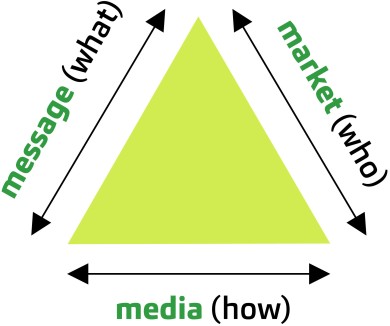Lease accounting: A surprising deal-breaker in M&A transactions
Promising merger and acquisition deals often collapse at the final hour due to an unexpected deal-breaker....
Where does one start? How much should you spend?
Time to read: 5 mins
We hear this statement often. Mostly from small to medium business owners absolutely frustrated with trying to market a business and feeling completely overwhelmed by all the options and information out there.
There are endless advertising platforms available these days. From traditional channels, including print, posters, magazines, radio or direct mail to digital mediums like social media, websites, email marketing, digital billboards, blogs, cinema, in game, Google Ads, podcasts, and much, much more.
So, where does one start when developing a marketing plan? And how much should you spend? How do you know if it is going to work? We can tell you (hand on heart) that just about all marketing channels will and can work - but if you’ve tried and not seen any return, you probably don’t agree. There are three strong reasons that you may think this is the case.
1 - There are too many cooks in your marketing decision making process. Too many stakeholders want a say in the ‘advertising message’ and the primary marketing message gets lost in unnecessary detail and industry language. Trust your marketing guru and use their skills to make sure the marketing message is clear. If you don’t have a marketing guru, don’t consult the entire team - keep it selective.

The marketing results triangle
2 - You select the wrong marketing channels that fit your audience. A strong advertising account rep can be very convincing. Also ‘The Joneses’ are quite persuasive. The reps are correct that their marketing channel gets results and has strong data to back it up, and The Joneses reckon Tik Tok is where you advertise¦ but YOUR business might not need to be there. You MUST know if your primary target customers are listening/watching/interacting with those channels.
AND
3 - There is a fundamental misalignment in the ‘marketing results triangle’.
You need to inherently understand HOW each marketing channel works, WHO the intended audience is, and if your brand and target audience sits in ALIGNMENT with the channel. If you have those ducks in a row, you also need to ensure the language of your marketing efforts are TAILORED to that channel’s audience¦ which in simple terms means, don’t run the same advert/message across everything.
The marketing job you need to do as a business owner is understand:
For example: If you sell books, you may believe you have a wide customer base. But not everyone likes a physical book anymore and may use a digital device (likely with GenY/Millennials or Gen Z) - so using ‘youthful’ channels like Tik Tok, SnapChat or ClubHouse might be a waste of time/budget. The Baby Boomers and Gen X still love a good book - but one group is watching TV news or listening to ZB, and the other is scrolling Facebook, You Tube and reading Stuff online.
If you say: ‘We are the best bookseller in town, we have books for everyone’ and you run ads in the paper, on Facebook, billboards or on Spotify... You might be establishing a little brand presence, but it won’t be driving results. However, if you say (on ZB for example) ‘For the latest autobiographies, gardening and cookbooks, and where customer service is still a personal experience, come to our bookstore’ - you’re speaking Baby Boomer language, on a channel they’re actively listening to.
In comparison for Gen X you might run a Facebook carousel advert (a series of images and offers), highlighting the latest best-sellers, trending topics, parenting or self-help books, and use a quick ‘click to buy’ option through the Facebook store. GenX (and Xennials) are at a busy, family and career driven stage of life. Language that makes things easy, on a channel they use regularly is going to win.
That was a very simplistic example, but hopefully you understand the point. There is no one size fits all approach to marketing. The goal posts have shifted a lot in the last 20 years, and to make a success of it, you cannot have misalignment in the marketing results triangle.
If you take one thing away from this article it’s this: Know your target audience, know the marketing channel, know the language you need to be using to ‘speak’ to them in a way they relate.
A way to get clarity on this is to have a solid marketing strategy. It is just as important as your overarching business plan. It should give clarity on the who, what, why and when and should provide clear guidance on where and how to spend your hard-earned marketing dollars and what opportunities to look for.
If everything I’ve said above sounds like it should be filed in the ‘too hard’ basket, then consider using the services of a marketing agency, a consultant, or employ a qualified and experienced marketing person(s) into your team to make sure your marketing is no longer a challenge but is a part of your business that is generating great results.
DISCLAIMER No liability is assumed by Baker Tilly Staples Rodway for any losses suffered by any person relying directly or indirectly upon any article within this website. It is recommended that you consult your advisor before acting on this information.
Our website uses cookies to help understand and improve your experience. Please let us know if that’s okay by you.
Cookies help us understand how you use our website, so we can serve up the right information here and in our other marketing.